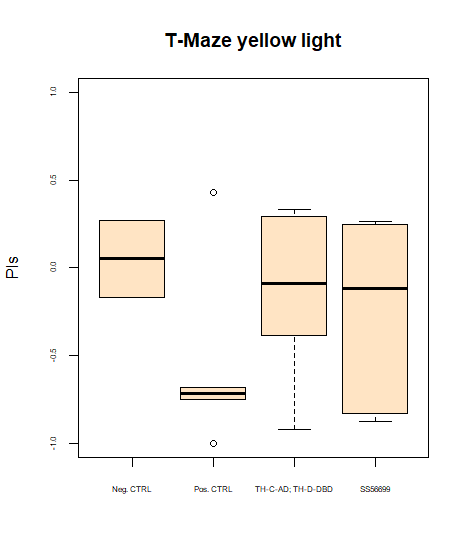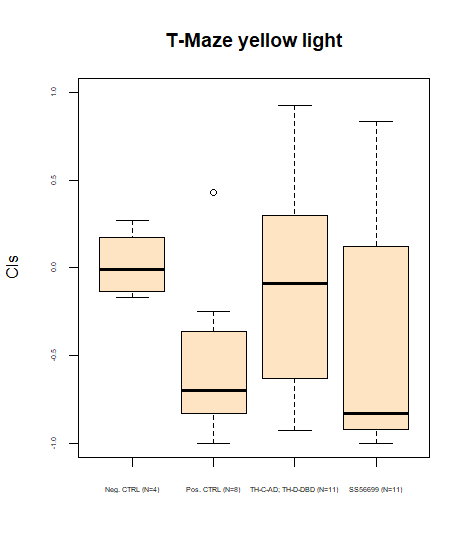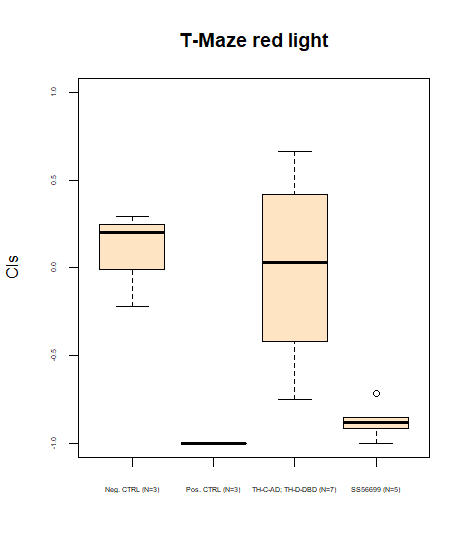Small but important differences
on Monday, July 22nd, 2024 8:52 | by Björn Brembs
Slowly the data are filling up and we start to see some differences emerge between the controls and the aPKC knock-outs:

We still need to get to about N=40, so there is still some way to go.
Category: operant self-learning, PKC | No Comments
Adding results for T-Maze (and correcting y-axis description)
on Sunday, July 21st, 2024 5:15 | by Daniel Döringer
Category: Uncategorized | No Comments
First T-Maze results coming in
on Monday, July 15th, 2024 8:41 | by Daniel Döringer


Category: Uncategorized | No Comments
Quality control reduced number of animals
on Monday, July 15th, 2024 8:34 | by Björn Brembs
Going over the optomotor responses with a fine comb revealed a bunch of flies where the algorithm wasn’t able to provide a proper fit for the OMR asymptote. Therefore, I will need more time to finish the data set. Here the current torque-learning PIs:

Clearly, the genetic controls learn while the flies with knocked-out aPKC in FoxP neurons fail to show a significant learning score. However, the OMR asymmetry effect in the genetic controls appears weaker than the one we discovered in WTB flies, as can be seen in the OMR traces after the self-learning:

Then again, at the .05 level, the asymmetry index is significant. Not the alpha level we commonly use, but also a lower N than we strive for (above is before training, below is after):

The transgenic experimental flies, in contrast, don’t seem to show much of an effect at all:


Category: Foxp, operant self-learning, PKC | No Comments
Almost there
on Monday, July 8th, 2024 8:33 | by Björn Brembs
Not many fliers left now. Will start evaluating optomotor asymmetry now.

Category: operant self-learning, Optomotor response, PKC | No Comments
Self-learning, 8 minutes, elav-Gal4>UAS-for-RNAi
on Monday, July 8th, 2024 8:26 | by Radostina Lyutova
Category: Memory, Operant learning, operant self-learning, Rover/Sitter | No Comments
More data from the basement
on Monday, July 8th, 2024 8:15 | by Ellie
With the modified laser settings I was able to test 3 more wtb. Here are the results:

–> yaw torque
Yaw torque avoidance reference
on Monday, June 24th, 2024 10:01 | by Björn Brembs
Category: Foxp, Operant learning, operant self-learning, PKC | No Comments
Testing the basement flight simulator
on Wednesday, June 19th, 2024 3:46 | by Ellie
Before collecting the actual data I make sure that the flight simulator in the basement does its thing ;) Here are the test runs with wtb flies for different protocols:

—>> yaw torque

–>> switch mode

–>> habit formation
Passing the halfway mark
on Monday, June 17th, 2024 8:25 | by Björn Brembs
Finally have about half the number of flies needed. It looked like the flies that used the FoxP virgins didn’t fly as well as the other flies, so we dropped that branch and have stopped using them for the crosses. Pooling the FoxP>aPKC/CRISPR flies no increases the N in this group:
Category: Foxp, operant self-learning, PKC | No Comments




